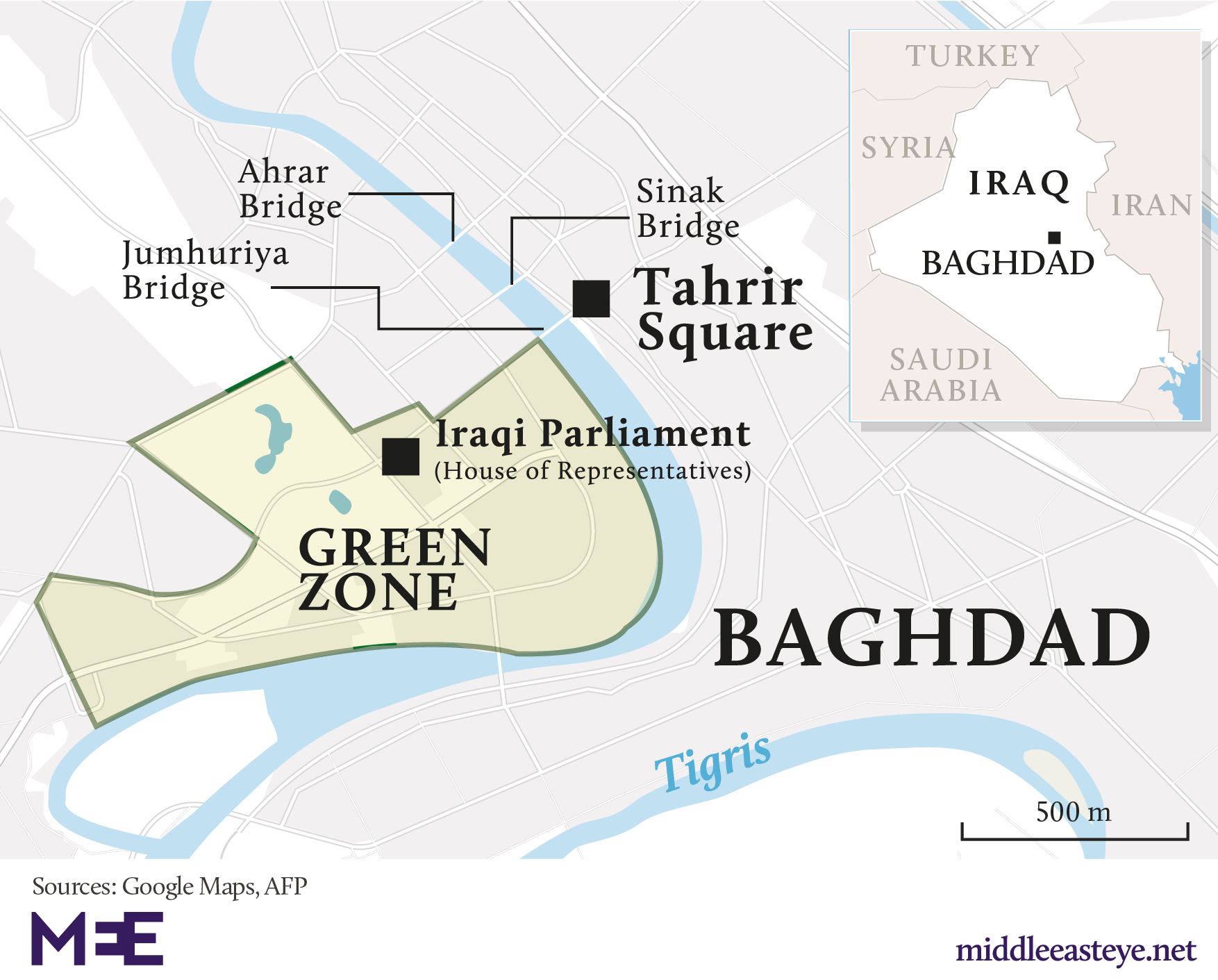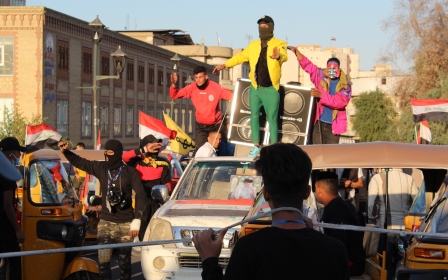Iraqi forces fire live ammunition, kill four protesters in Baghdad

Iraqi forces killed at least four civilians and wounded more than forty protesters on Thursday near two key bridges in Baghdad which have become a focal point for anti-government protests, health officials said.
Security officials and medical staff told Reuters that officers had aimed live ammunition and tear gas canisters directly at the heads of protesters.
Earlier on Thursday, police officials said one protester was killed near Sinak bridge and another was killed near the Ahrar bridge.
Two other critically wounded protesters died in the hospital. One of the victims died from wounds sustained by live fire shot to the head and the other was struck in the head by a tear gas canister, hospital and police sources told Reuters.
Hospital officials added that some of the wounded protesters had injuries sustained from live ammunition, while others were wounded by rubber bullets and tears gas canisters.
New MEE newsletter: Jerusalem Dispatch
Sign up to get the latest insights and analysis on Israel-Palestine, alongside Turkey Unpacked and other MEE newsletters
Despite the growing security crackdown, protesters continue to control parts of three major bridges in central Baghdad that lead to the capital's fortified Green Zone where government buildings and foreign embassies are located.
Security forces have erected concrete barriers on the bridges to hold protesters back, and late on Wednesday they fired tear gas and live ammunition at crowds gathering on the Sinak and Ahrar bridges.
Local officials fear the crowds could use Sinak bridge to reach the Iranian embassy or cross the adjacent Ahrar bridge further north to protest at the central bank and other government buildings.
Protesters in Tahrir Square have condemned Tehran for propping up an Iraqi government they see as corrupt and inefficient, even accusing Iran of backing the use of violence against them.
More than 300 people have been killed since the start of mass unrest in Baghdad and southern Iraq in early October, the largest demonstrations since the fall of Saddam Hussein in 2003.
Deadly use of live ammunition, tear gas and stun grenades against mostly unarmed demonstrators have stoked the unrest.
Protests began in response to public frustrations over Iraq's corruption and Iran's meddling in the country's politics, as millions of Iraqis continue to live in poverty without basic public services.
Middle East Eye delivers independent and unrivalled coverage and analysis of the Middle East, North Africa and beyond. To learn more about republishing this content and the associated fees, please fill out this form. More about MEE can be found here.





